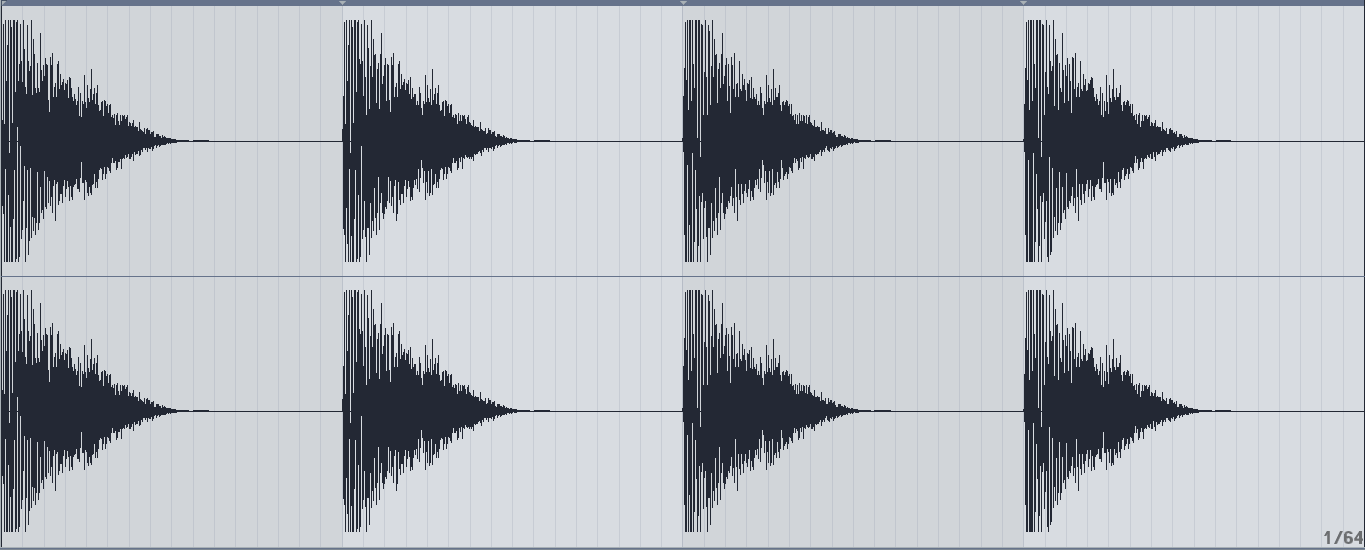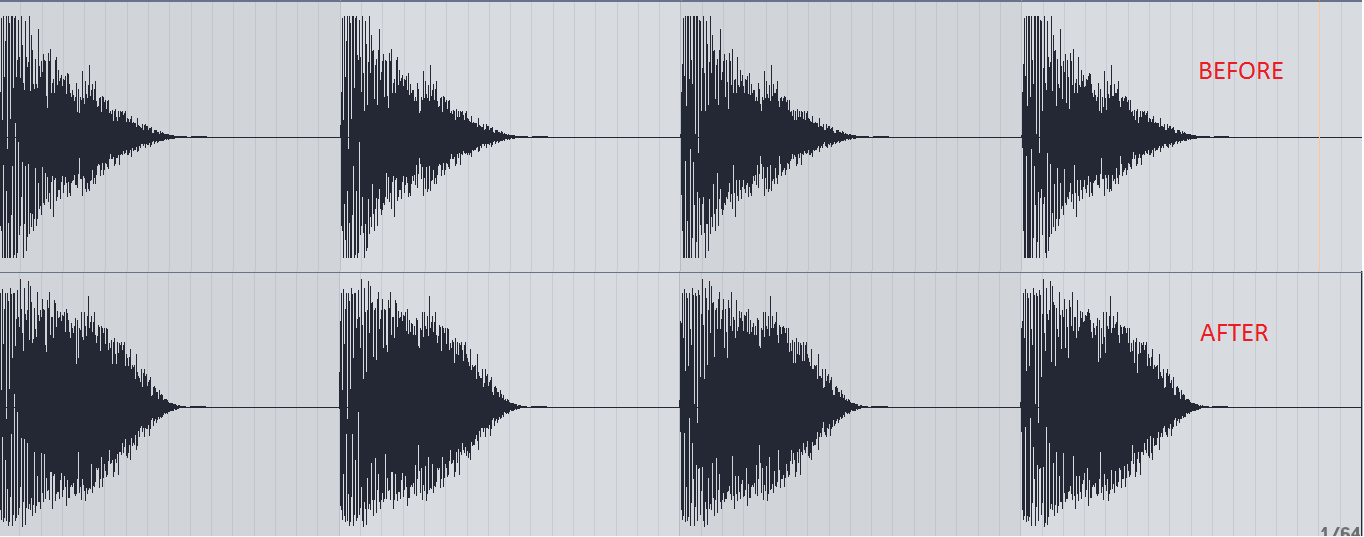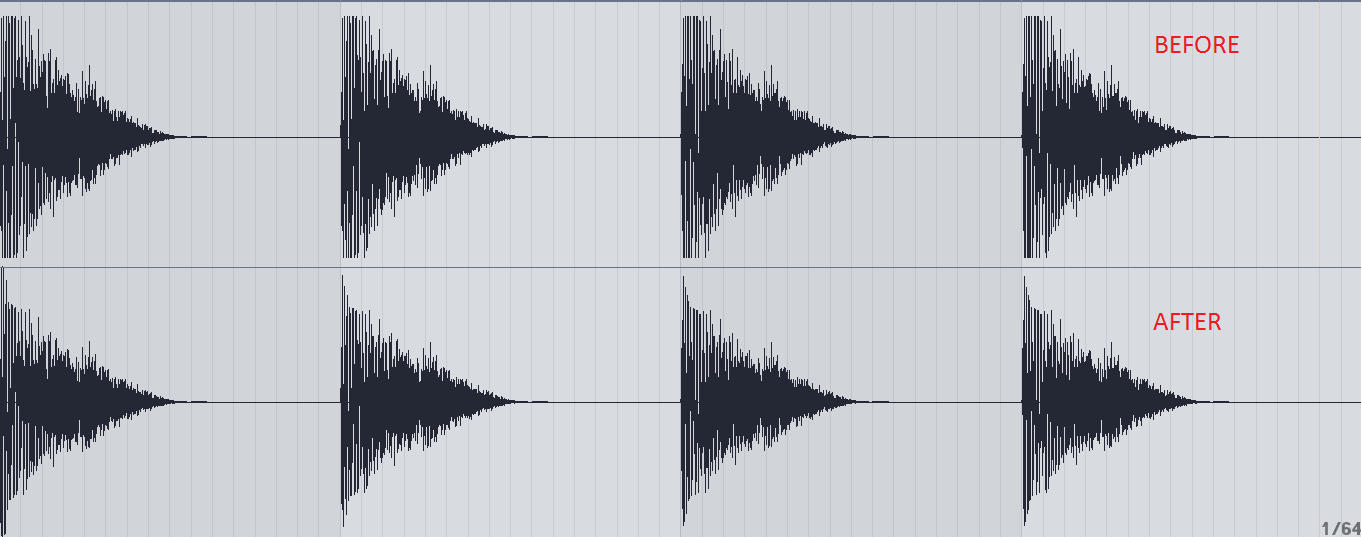Getting your drums to sound punchy and clear can be difficult, but there’s a tool in our arsenal that can help.
Compression.
In this article, we’ll look closely at the attack and release parameters, and how they can significantly affect our sound.
You can watch the video below or read the post (or both, if you want!)
If you’re reading, let’s dive in! 👇
Is compression confusing you? 🤷
Get our one-page cheat sheet containing everything to help you understand ratio, threshold, attack, release, and all of the compression parameters with simplicity.
Understanding Attack and Release
Attack is how long it takes for the compressor to go from no compression, to full compression.
Release tells the compressor how long to act on the audio signal after it passes the threshold.
The great thing about these two functions is that they can fix a lot of problems in the mix. If you’ve got a snare that punches through way too much, then using a fast attack and release will bring it down. If you’ve got a percussion hit that isn’t punchy enough, then a slow attack and release will help it punch through.
Compression Material
We’re going to be using a snare as an example throughout this post/video. The reason for this is because a good snare will have an attack and tail, which is great for shaping into the sound we want.
Here’s an image of the waveform, without any compression.

1. Fast Attack & Release
There are a couple of situations where you’d want to use a fast attack and release.
Using a fast attack causes the compressor to respond quickly to the initial sound (drum transient), and reduces the gain quickly. Setting a fast release time causes the compressor to reset quickly so the tail of the drum hit won’t be as compressed.
This gives us less drum attack/transient overall and is a great way to reduce unwanted peaks in a song.
Compare the uncompressed clip from before with this one. What do you notice? There’s a lot less transient on the snare and it sounds like it has less of a body to it.
Check out the change in the waveform.
This may not sound as good, but it’s important to note the significant change in the sound. If you want to reduce punch and attack, this is how you do so.
2. Fast Attack & Slow Release
If you have a drum hit that’s either very punchy with little tail, or lots of tail with little punch – then this is the solution for you.
Having a fast attack means the compressor will still clamp down on the signal quickly, but the slow release allows the gain reduction to reset a lot slower. This means the attack and sustain of the drum hit will become more consistent with each other.
Key Point: More consistent and better balance.
The difference is rather subtle, but you should notice that the tail is more balanced out with the transient. The visual difference is almost incomparable, and the sample being used for this post is not going to be significantly affected by a fast attack and slow release.
Using this kind of setting is useful when your drums lack depth or body, as it evens out the transient and tail.
3. Slow Attack & Slow Release
This is how we get our punch!
Making the attack time longer will allow some of the drum transient to avoid the compressor. Not only this, but the long release time causes the drum’s tail to stay compressed throughout.
The result is that the transient sounds a lot louder than the rest of the sound, therefore, less sustain. When people talk about using compression to add punch – this is what they’re referring to (usually).
You can hear that it’s got a lot more attack to it. Check out how the waveform differs:
As you can see, there’s more of a peak but less body.
NOTE: It’s important not to use too long of an attack, otherwise the compressor won’t act at all!
Is compression confusing you? 🤷
Get our one-page cheat sheet containing everything to help you understand ratio, threshold, attack, release, and all of the compression parameters with simplicity.
Wrapping it All Up
Compression can be a great tool to achieve your desired balance, especially with drums.
We’ve looked at three different ways we can affect the sound of a drum hit via the time settings on a compressor.
One thing to note is that these time settings do have certain side effects (short attack time on a kick drum can reduce the low-end, etc.) It all comes down to listening closely to the sound and working out how compression changes it.
So next time you want that punchy snare, or mellow percussive sound – you know what to do!



